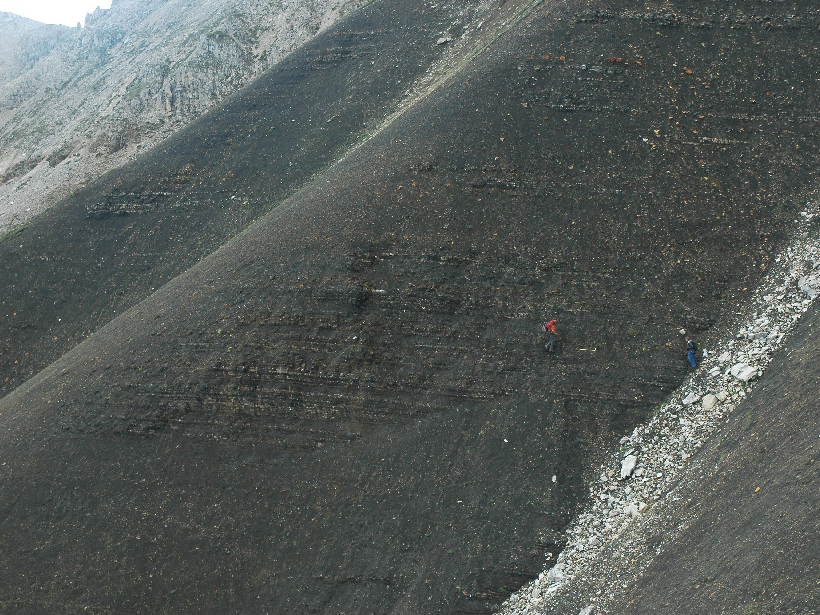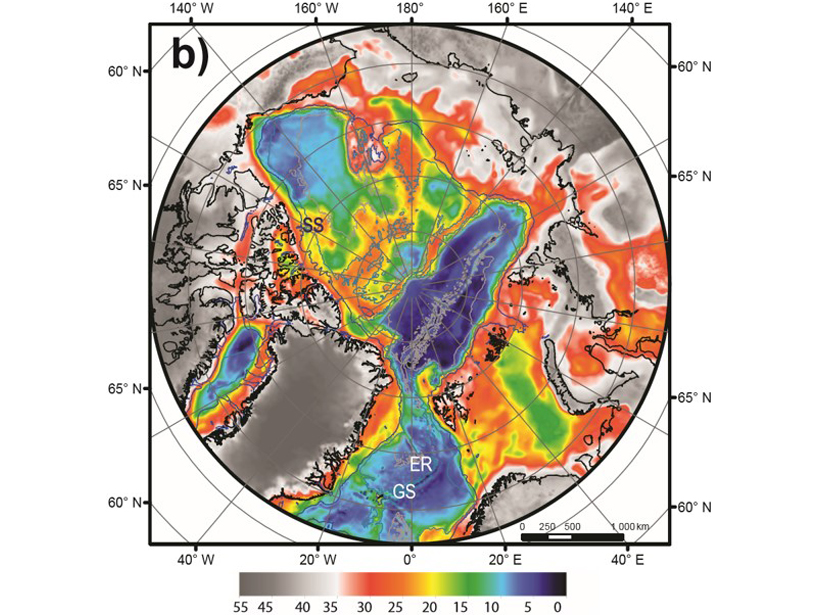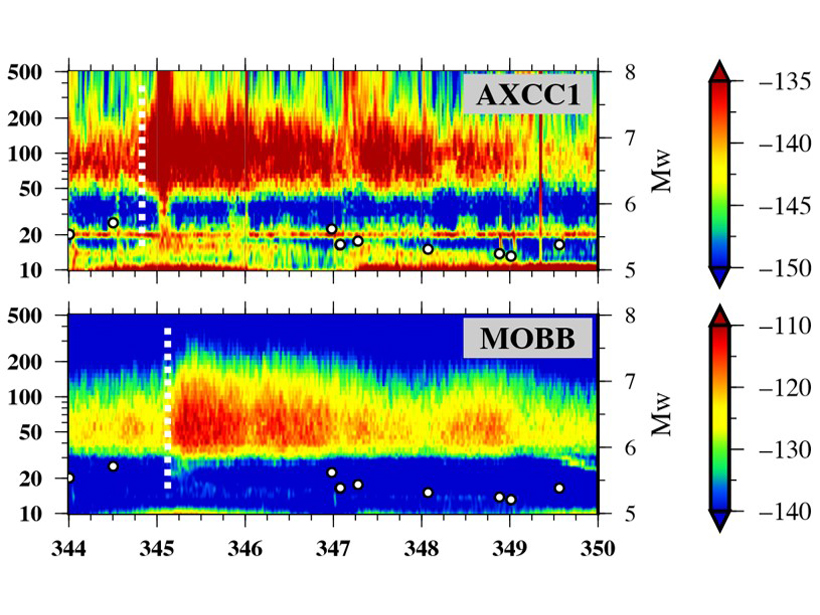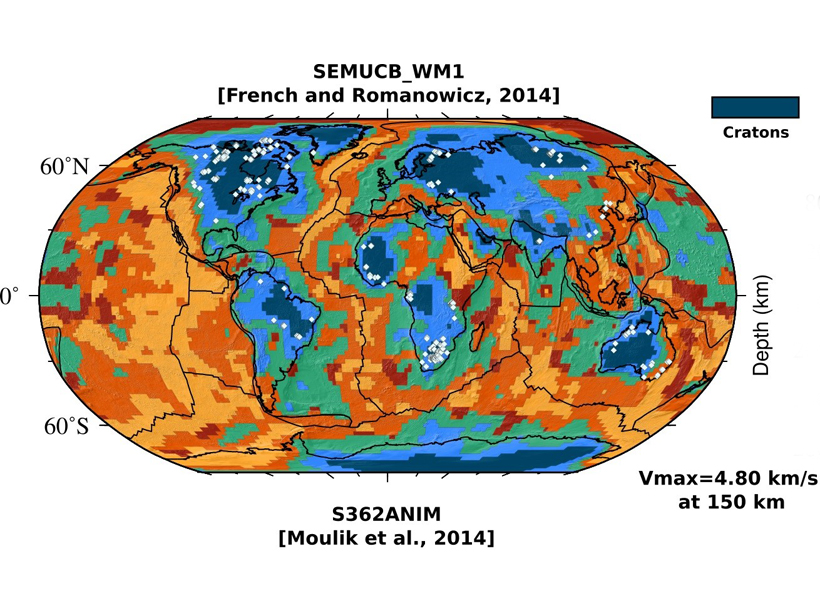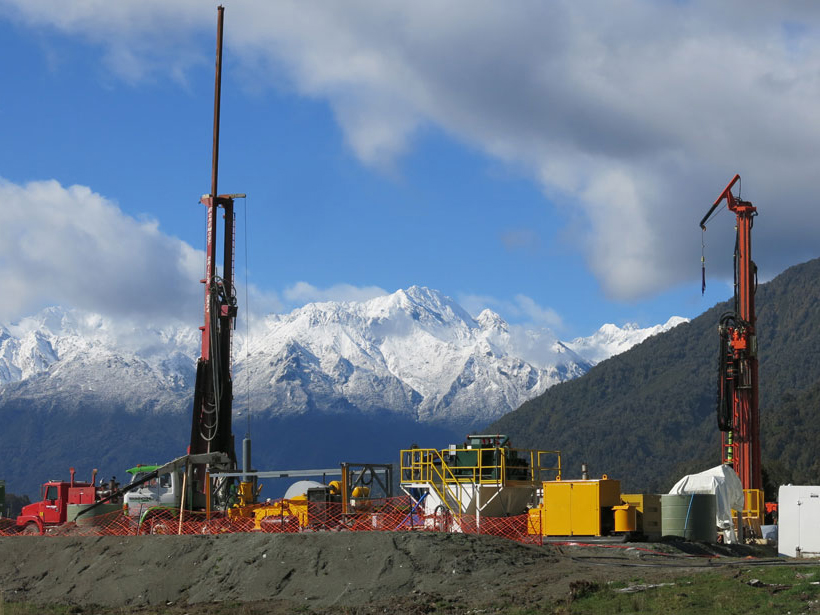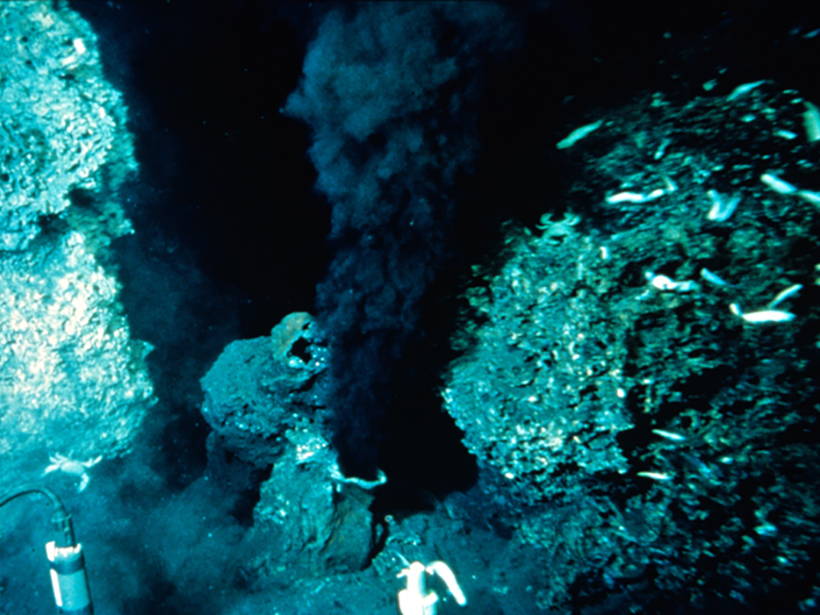Researchers validated some steps in the standard sequential chemical technique used to extract different forms of iron from rock samples but found inconsistencies in other steps.
Geochemistry, Geophysics, Geosystems
Revealing the Arctic Crust
A new model, ArcCRUST, reveals with unprecedent resolution the geometry and the thermal state of the oceanic crust of the High Arctic and Circum-Arctic domain.
Paleomagnetism Indicators May Be Flawed
A new study finds that magnetism in volcanic ash tuff forms through varied processes, calling into question previously reliable signatures used to study variations in Earth’s magnetic field.
New Global Analysis Reveals Amount of Sediment on the Ocean Floor
Researchers calculate that there are ~3.37 × 108 cubic kilometers of sediment on the world’s ocean floor.
Follow The ‘Hum’: The Seismic Signal of Pacific Ocean Storms
Have you ever noticed that the Earth is humming? Seismologists have! Discover how individual storms in the northern Pacific Ocean generate a long-period seismic signal.
Regional Metamorphism Occurs Before Continents Collide
Evidence from collision zones suggests that the high temperatures that create regional zones of metamorphic minerals occur in wide, hot back arcs prior to continental collision deformation.
Are Diamonds Ubiquitous Beneath Old Stable Continents?
Although rare at the Earth’s surface, diamonds may be commonplace at depths of 120 to 150 kilometers below the surface within the lithosphere of old continents.
Drilling into a Future Earthquake
Researchers drill into a fault that is anticipated to rupture in coming decades to study fault structure and earthquake physics.
Is the Lower Crust Convecting Beneath Mid-Ocean Ridges?
The first attempt to couple models of hydrothermal circulation and magmatic convection along fast-spreading ridges may explain the spacing of hydrothermal vent fields along the East Pacific Rise.
A Powerful New Tool for Research
A novel interface allows users of MATLAB and GMT, two software packages widely used by the geoscience community, to simultaneously harness the capabilities of both products.

